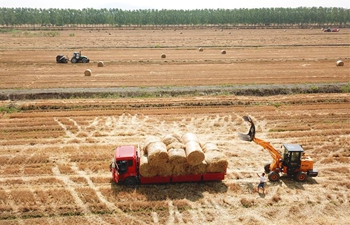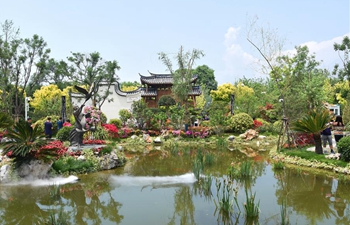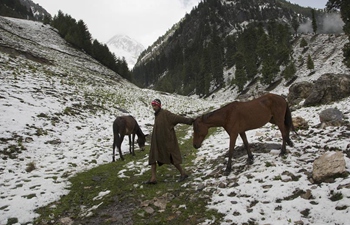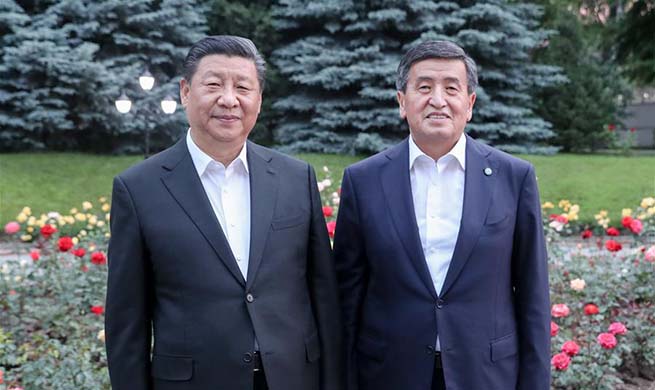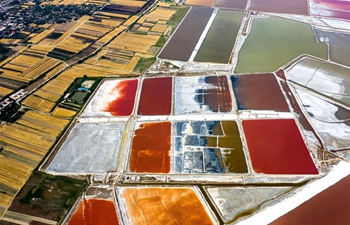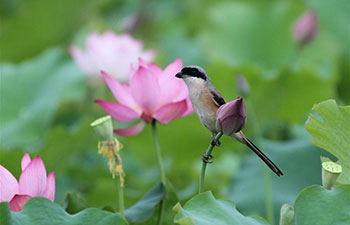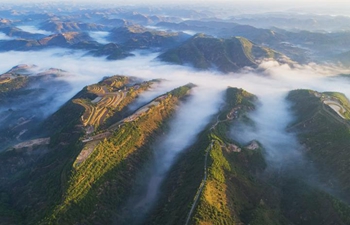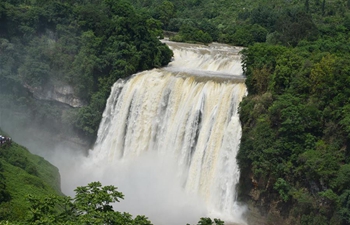LHASA, June 13 (Xinhua) -- Barkhor Street in downtown Lhasa is crowded with Tibetan Buddhists from dusk to dawn. Even during the most excruciating moments of the day, believers prostrate themselves on the stone pavements in tribute of Buddha.
Thursday is the 11th day of the fourth month according to the Tibetan calendar. The fourth month is the month of Sakadawa, or the anniversary of Buddha's Birth, Enlightenment, and Death. The peak of the festival is the 15th day of the fourth month, which falls on next Monday.
Lhasa, capital of Tibet Autonomous Region, is the holy city of Tibetan Buddhism. Tens of thousands of believers visit the city during the month to celebrate Sakadawa, also spelled Saka Dawa. They make circles around shrines, burn incense, make offerings and help the poor and the weak.
Barkhor Street encircles Jokhang Temple, which has a statue believed to be a life-size statue of Sakyamuni, founder of Buddhism, at 12 years old. It takes about 20 minutes to walk the street, and even longer for believers who prostrate themselves.
Among the streams of pilgrims are old Tibetans dressed in traditional robes, with prayer wheels or beads, and young people whose steps are brisker. There are more young people who prostrate than old ones. Some pause to take selfies to share with friends and families. When the number of pilgrims rises after sundown, orange cordons are used to separate those who walk and prostrate to maintain safety.
Lhasa has three sacred paths for pilgrims -- the Barkhor, a circle around the Potala Palace, and Lingkhor, or the outer pilgrim circumambulation path in Lhasa. Devout Buddhists brave scorching heat in the city of the sun to complete their pilgrimage.
Lodro, 73, is a local retiree. He walks one or two more circles around the Potala Palace every day during the festival month. "A growing number of people from the rural and herding areas come to work in Lhasa. They often make pilgrimages when they have spare time," he said.
The city government set up service sheds along these paths, with long stools, to provide water, tea, and first aid services to the pilgrims.
"Everyday more than 500 people stop to rest at my shed, but generally, people fill up their water bottles and continue walking. I've lost count of them," said Tsenten Drolma, a community worker on the north Lingkhor Road.
The freedom of religious belief in Tibet is best exemplified in the month of Sakadawa. Currently, Tibet has 1,787 sites for the practice of Tibetan Buddhism, over 46,000 resident monks and nuns and 358 Living Buddhas.
In the Ramogia Monastery in Lhasa, where a statue believed to be Sakyamuni at eight years old is kept, believers take wooden boards and enough roasted barley flour and water for a day to carry out prostration.
Throughout the day, long lines of Buddhists carry yak butter in thermos bottles to make offerings at the Jokhang Temple. Among them are people from various parts of Tibet, and other provinces.
Tashi Dondrup, 28, is a farmer from Xigaze. He is studying in a driver's school in Lhasa to obtain a driver's license. "It takes six hours to finish prostrating around the Potala Palace. It is something meanful to prostrate in the month of Sakadawa," he said.





